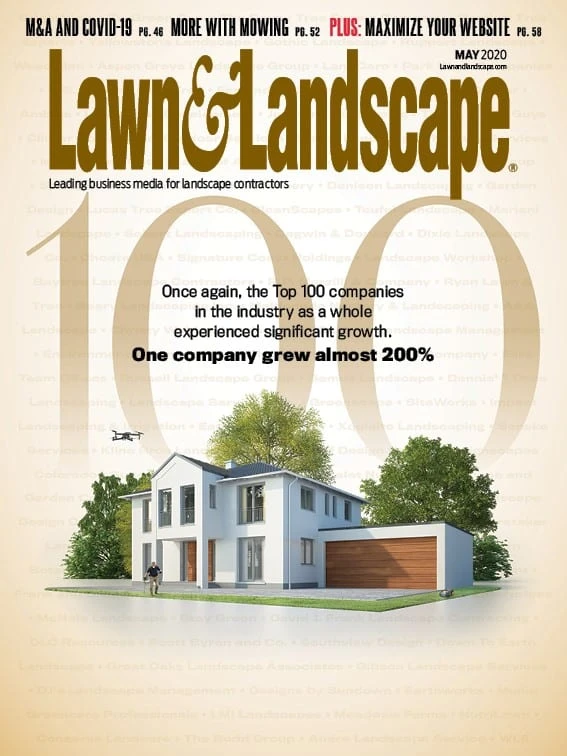
Travels with Jim follows Jim Huston around the country as he visits with landscapers and helps them understand their numbers to make smarter decisions.
In 1992, I wrote my second book for the green industry. It was titled, “Preparing for & Responding to a Down Economy” and a response to the economic doldrums that we were experiencing at that time. I printed 500 copies but only sold 200. Some would call that a failure. I, however, choose to see it differently. I sold 200 copies and look what it did for the economy. It turned it right around. Can you imagine the positive impact on the economy had I sold all 500 copies?
Are recessions (periods of reduced cash flow) a reflection of a collective state of mind? Is running a successful business a state of mind? To a lesser or greater degree, I’d argue that they are. It doesn’t mean there aren’t real underlying issues and conditions that precipitate economic downturns.

I’ve monitored hundreds of green industry companies through four recessions. Here is some of what I’ve learned. I’ll focus on my observations from the 2008-9 recession.
Observations about economic downturns.
Recessions are not singular monolithic events that affect all industries and all parts of the country equally.
- There are approximately 16 regional or geographical economies in the United States. Each is affected differently by a recession.
- Recessions are neither predictable nor preventable.
- Landscape contractors are extremely creative individuals. They can figure out a way to go broke even in a great economy.
- It takes about five years to fully recover from a recession.
How recessions affected the industry
• Landscape construction, residential design/build and bid/build: This is the first segment of the green industry to go down the economic toilet. In 2009, almost all of my residential install clients saw their sales cut in half from 2008. Some suffered more drastic downturns. Their customers saw their financial portfolios cut in half.
• Landscape construction, commercial design/build and bid/build: Most of my clients in this segment of the market had a fairly good 2009 because they had plenty of work in their pipeline. Financing for these projects was approved and the builders were finishing them.
However, this segment of the green industry took a serious hit in 2010. It wasn’t uncommon to see 20-plus contractors bid on a project. Gross profit margins dropped to just above the break-even point for most projects.
• Landscape construction, public works: This market segment also fared rather well in 2009. However, once the commercial and residential installation market dried up, many of those contractors decided to get into the public works one.
• Landscape maintenance, all segments: Even though many of the installation contractors jumped into this market in 2009 and 2010, it remained fairly strong throughout the recession. Surprisingly, residential fine gardening and commercial enhancements remained strong, if companies had the staff to pursue such work.
• Tree care: Typical of most green industry service segments (as compared to the installation one), tree care work – commercial, municipal and residential, etc. – remained pretty strong during the last downturn.
This includes plant health care work. In no small way, this is partly because tree care work tends to be less discretionary than some of the other services.
• Lawn care (chemical applications): This part of the economy remained very strong during the 2008-9 downturn. Perhaps the resiliency of this market was partly due to customers wanting their homes, HOAs, businesses, etc. to look good on the outside in spite of the financial woes they were experiencing on the inside.
• Irrigation installation: Not surprisingly, this market segment paralleled the landscape installation one. Some contractors in the golf course market actually did fairly well.
• Irrigation service work: Many of my clients grew significantly in this part of their business the last 10 years. Like lawn care, I think that many residential and commercial customers weren’t willing to let their lawns and shrubs dry up and die.
Conclusion.
Economic downturns, while virtually inevitable, are survivable. To a large extent, they are what I call a state of mind. Many of my clients grew significantly during the recession of 2008-9.
When the economy shrinks, you need to study what is happening externally in the economy and internally in yourself and your business. Next time, we’ll discuss specific things that you can do to not only prepare for an economic downturn but also what to do once you get in one.

Explore the May 2020 Issue
Check out more from this issue and find your next story to read.
Latest from Lawn & Landscape
- Landscape Workshop acquires Tampa's A-Stellar Property Maintenance and Landscaping
- Husqvarna debuts 590BTS and 590BFS backpack blowers
- Kress showcases its automower Cut N Go
- Kress releases new autonomous mower details
- Landscape Workshop acquires EdgeForm Landscape Management
- Caterpillar's Umpleby transitions to executive chairman
- Sgro named Yanmar Compact Equipment's North American president
- APHIX acquires Curb Appeal Landscaping in Birmingham





